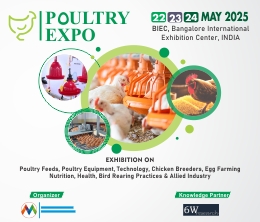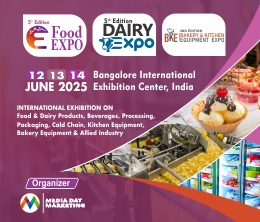Morocco Animal Feed Market (2025-2031) | Revenue, Trends, Industry, Share, Forecast, Growth, Value, Outlook, Size, Analysis & Companies
Market Forecast By Form (Pellets, Crumbles, Mash, Others), By Species (Poultry, Ruminants, Aqua, Swine, Others), By Type (Acidifiers, Probiotics, Enzyme, Antioxidants, Antibiotics, Vitamins, Minerals, Others) And Competitive Landscape
| Product Code: ETC018493 | Publication Date: Oct 2020 | Updated Date: Jan 2025 | Product Type: Report | |
| Publisher: 6Wresearch | No. of Pages: 70 | No. of Figures: 35 | No. of Tables: 5 | |
Morocco Animal Feed Market Competition 2023
Morocco Animal Feed market currently, in 2023, has witnessed an HHI of 1327, Which has increased slightly as compared to the HHI of 1288 in 2017. The market is moving towards highly competitive. Herfindahl index measures the competitiveness of exporting countries. The range lies from 0 to 10000, where a lower index number represents a larger number of players or exporting countries in the market while a large index number means fewer numbers of players or countries exporting in the market.
Morocco Export Potential Assessment For Animal Feed Market (Values in USD Thousand)
Topics Covered in the Morocco Animal Feed Market
Morocco Animal Feed Market report thoroughly covers the market by form, species, and type. The market outlook report provides an unbiased and detailed analysis of the ongoing market trends, opportunities/high growth areas, and market drivers which would help the stakeholders to devise and align their market strategies according to the current and future market dynamics.
Morocco Animal Feed Market Synopsis
Morocco Animal Feed Market continues to grow, driven by the demand for quality meat and dairy products, diverse livestock population, and government support. Morocco is a country situated in the northwestern corner of Africa. Known for its rich culture, vibrant cities, and beautiful coastlines, it is also home to a thriving animal feed market. In recent years, the demand for animal feed has grown exponentially in Morocco, with more and more farmers turning to animal feed to improve productivity and quality.
According to 6Wresearch, the Morocco Animal Feed Market size is projected to grow by 5.6% during the forecast period of 2025-2031. The market is driven by growing demand for quality meat and dairy products, increasing awareness among farmers about the benefits of animal feed, and government support for the agriculture sector. Additionally, the country has a diverse population of livestock, including cattle, poultry, sheep, and goats, which further fuels the demand for animal feed. Despite the growth opportunities, the Morocco animal feed market faces several challenges. These include rising costs of raw materials, lack of quality control, and the limited availability of locally produced feed ingredients. Moreover, the lack of standardization in the industry poses a considerable challenge for farmers to choose the right feed for their livestock, which often leads to the wrong feeding practices, leading to a decrease in livestock productivity.
The animal feed market in Morocco also faces a range of threats, including changes in climate, fluctuations in feed prices, and the high incidence of animal diseases. The country's unpredictable weather patterns have an adverse impact on feed production and availability, leading to price hikes, which directly affect farmers. Apart from this, the trends in the Morocco animal feed market are toward the incorporation of value-added feed ingredients such as herbs, natural additives like enzymes, probiotics, and prebiotics that help in improving animal health. Furthermore, there has been a trend towards sustainable practices in animal feed production, with farmers preferring locally sourced, organic feed ingredients over artificial ones. Despite challenges and threats, the Morocco animal feed industry presents various growth opportunities for suppliers and manufacturers in various sectors. The agriculture sector in Morocco accounts for about 16% of the country's GDP, and there is a significant demand for animal feed. There is an opportunity for manufacturers to cater to the growing demand and improve their products' quality and standardization, which will further enhance the Morocco Animal Feed Market Growth.
Government policies and schemes introduced in the Morocco Animal Feed Market
Morocco is a leading market in the animal feed industry. It has shown a consistent growth rate in recent years, and the government policies and schemes introduced in the market have been a key contributor. The government has implemented several initiatives to help the industry grow and maintain a competitive edge in the global market.
National Program for Poultry and Livestock Production
The National Program for Poultry and Livestock Production was launched in 2011 by the Moroccan government, with the aim of developing a modern, competitive, and sustainable livestock sector. The program includes initiatives that support animal feed manufacturers, such as improving the supply of raw materials and providing financial support. The program also seeks to improve the quality and quantity of animal feed produced in the country.
The Green Plan
The Green Plan was introduced in 2008, with the objective of modernizing the agricultural sector in Morocco. The initiative prioritizes investments in agriculture, such as irrigation and animal feed production. Under this scheme, the government has been providing various subsidies to farmers and feed manufacturers to encourage them to invest in modern technology and machinery.
The National Strategic Plan for Agriculture
The National Strategic Plan for Agriculture was launched in 2020, with the goal of improving the competitiveness and sustainability of Moroccan agriculture. The plan has several components, one of which is focused on the animal feed industry. The plan aims to increase the production of animal feed and improve the quality of feed produced in the country.
Leading players in the Morocco Animal Feed Market
The Morocco Animal Feed Market Share is dominated by several leading players such as Cargill, Purina, Provimi, and Alltech. Cargill is known for manufacturing and marketing high-quality animal feed products, while Purina is known for providing nutritional feed solutions for different animal species. Provimi is recognized for its broad range of premixes and additives, while Alltech is recognized for its unique approach to animal nutrition, that incorporates bio-molecular and organic techniques.
Market Analysis by Form
According to Shivankar, Research Manager, 6Wresearch, pellets are the most popular form of animal feed in Morocco and account for a significant share of the market. Pellets are often preferred for their ease of storage and handling.
Key attractiveness of the report
- 10 Years Market Numbers.
- Historical Data Starting from 2021 to 2024.
- Base Year: 2024.
- Forecast Data until 2031.
- Key Performance Indicators Impacting the Market.
- Major Upcoming Developments and Projects.
Key Highlights of the Report:
- Morocco Animal Feed Market Outlook
- Market Size of Morocco Animal Feed Market, 2024
- Forecast of Morocco Animal Feed Market, 2031
- Historical Data and Forecast of Morocco Animal Feed Revenues & Volume for the Period 2021 - 2031
- Morocco Animal Feed Market Trend Evolution
- Morocco Animal Feed Market Drivers and Challenges
- Morocco Animal Feed Price Trends
- Morocco Animal Feed Porter's Five Forces
- Morocco Animal Feed Industry Life Cycle
- Historical Data and Forecast of Morocco Animal Feed Market Revenues & Volume By Form for the Period 2021 - 2031
- Historical Data and Forecast of Morocco Animal Feed Market Revenues & Volume By Pellets for the Period 2021 - 2031
- Historical Data and Forecast of Morocco Animal Feed Market Revenues & Volume By Crumbles for the Period 2021 - 2031
- Historical Data and Forecast of Morocco Animal Feed Market Revenues & Volume By Mash for the Period 2021 - 2031
- Historical Data and Forecast of Morocco Animal Feed Market Revenues & Volume By Others for the Period 2021 - 2031
- Historical Data and Forecast of Morocco Animal Feed Market Revenues & Volume By Species for the Period 2021 - 2031
- Historical Data and Forecast of Morocco Animal Feed Market Revenues & Volume By Poultry for the Period 2021 - 2031
- Historical Data and Forecast of Morocco Animal Feed Market Revenues & Volume By Ruminants for the Period 2021 - 2031
- Historical Data and Forecast of Morocco Animal Feed Market Revenues & Volume By Aqua for the Period 2021 - 2031
- Historical Data and Forecast of Morocco Animal Feed Market Revenues & Volume By Swine for the Period 2021 - 2031
- Historical Data and Forecast of Morocco Animal Feed Market Revenues & Volume By Others for the Period 2021 - 2031
- Historical Data and Forecast of Morocco Animal Feed Market Revenues & Volume By Type for the Period 2021 - 2031
- Historical Data and Forecast of Morocco Animal Feed Market Revenues & Volume By Acidifiers for the Period 2021 - 2031
- Historical Data and Forecast of Morocco Animal Feed Market Revenues & Volume By Probiotics for the Period 2021 - 2031
- Historical Data and Forecast of Morocco Animal Feed Market Revenues & Volume By Enzyme for the Period 2021 - 2031
- Historical Data and Forecast of Morocco Animal Feed Market Revenues & Volume By Antioxidants for the Period 2021 - 2031
- Historical Data and Forecast of Morocco Animal Feed Market Revenues & Volume By Antibiotics for the Period 2021 - 2031
- Historical Data and Forecast of Morocco Animal Feed Market Revenues & Volume By Vitamins for the Period 2021 - 2031
- Historical Data and Forecast of Morocco Animal Feed Market Revenues & Volume By Minerals for the Period 2021 - 2031
- Historical Data and Forecast of Morocco Animal Feed Market Revenues & Volume By Others for the Period 2021 - 2031
- Morocco Animal Feed Import Export Trade Statistics
- Market Opportunity Assessment By Form
- Market Opportunity Assessment By Species
- Market Opportunity Assessment By Type
- Morocco Animal Feed Top Companies Market Share
- Morocco Animal Feed Competitive Benchmarking By Technical and Operational Parameters
- Morocco Animal Feed Company Profiles
- Morocco Animal Feed Key Strategic Recommendations
Market Covered
The report offers a comprehensive study of the subsequent market segments:
By Form
- Pellets
- Crumbles
- Mash
- Others
By Species
- Poultry
- Ruminants
- Aqua
- Swine
- Others
By Type
- Acidifiers
- Probiotics
- Enzyme
- Antioxidants
- Antibiotics
- Vitamins
- Minerals
- Others
Morocco Animal Feed Market (2025-2031): FAQs
| 1 Executive Summary |
| 2 Introduction |
| 2.1 Key Highlights of the Report |
| 2.2 Report Description |
| 2.3 Market Scope & Segmentation |
| 2.4 Research Methodology |
| 2.5 Assumptions |
| 3 Morocco Animal Feed Market Overview |
| 3.1 Morocco Country Macro Economic Indicators |
| 3.2 Morocco Animal Feed Market Revenues & Volume, 2021 & 2031F |
| 3.3 Morocco Animal Feed Market - Industry Life Cycle |
| 3.4 Morocco Animal Feed Market - Porter's Five Forces |
| 3.5 Morocco Animal Feed Market Revenues & Volume Share, By Form, 2021 & 2031F |
| 3.6 Morocco Animal Feed Market Revenues & Volume Share, By Species, 2021 & 2031F |
| 3.7 Morocco Animal Feed Market Revenues & Volume Share, By Type, 2021 & 2031F |
| 4 Morocco Animal Feed Market Dynamics |
| 4.1 Impact Analysis |
| 4.2 Market Drivers |
| 4.3 Market Restraints |
| 5 Morocco Animal Feed Market Trends |
| 6 Morocco Animal Feed Market, By Types |
| 6.1 Morocco Animal Feed Market, By Form |
| 6.1.1 Overview and Analysis |
| 6.1.2 Morocco Animal Feed Market Revenues & Volume, By Form, 2021 & 2031F |
| 6.1.3 Morocco Animal Feed Market Revenues & Volume, By Pellets, 2021 & 2031F |
| 6.1.4 Morocco Animal Feed Market Revenues & Volume, By Crumbles, 2021 & 2031F |
| 6.1.5 Morocco Animal Feed Market Revenues & Volume, By Mash, 2021 & 2031F |
| 6.1.6 Morocco Animal Feed Market Revenues & Volume, By Others, 2021 & 2031F |
| 6.2 Morocco Animal Feed Market, By Species |
| 6.2.1 Overview and Analysis |
| 6.2.2 Morocco Animal Feed Market Revenues & Volume, By Poultry, 2021 & 2031F |
| 6.2.3 Morocco Animal Feed Market Revenues & Volume, By Ruminants, 2021 & 2031F |
| 6.2.4 Morocco Animal Feed Market Revenues & Volume, By Aqua, 2021 & 2031F |
| 6.2.5 Morocco Animal Feed Market Revenues & Volume, By Swine, 2021 & 2031F |
| 6.2.6 Morocco Animal Feed Market Revenues & Volume, By Others, 2021 & 2031F |
| 6.3 Morocco Animal Feed Market, By Type |
| 6.3.1 Overview and Analysis |
| 6.3.2 Morocco Animal Feed Market Revenues & Volume, By Acidifiers, 2021 & 2031F |
| 6.3.3 Morocco Animal Feed Market Revenues & Volume, By Probiotics, 2021 & 2031F |
| 6.3.4 Morocco Animal Feed Market Revenues & Volume, By Enzyme, 2021 & 2031F |
| 6.3.5 Morocco Animal Feed Market Revenues & Volume, By Antioxidants, 2021 & 2031F |
| 6.3.6 Morocco Animal Feed Market Revenues & Volume, By Antibiotics, 2021 & 2031F |
| 6.3.7 Morocco Animal Feed Market Revenues & Volume, By Vitamins, 2021 & 2031F |
| 6.3.8 Morocco Animal Feed Market Revenues & Volume, By Others, 2021 & 2031F |
| 6.3.9 Morocco Animal Feed Market Revenues & Volume, By Others, 2021 & 2031F |
| 7 Morocco Animal Feed Market Import-Export Trade Statistics |
| 7.1 Morocco Animal Feed Market Export to Major Countries |
| 7.2 Morocco Animal Feed Market Imports from Major Countries |
| 8 Morocco Animal Feed Market Key Performance Indicators |
| 9 Morocco Animal Feed Market - Opportunity Assessment |
| 9.1 Morocco Animal Feed Market Opportunity Assessment, By Form, 2021 & 2031F |
| 9.2 Morocco Animal Feed Market Opportunity Assessment, By Species, 2021 & 2031F |
| 9.3 Morocco Animal Feed Market Opportunity Assessment, By Type, 2021 & 2031F |
| 10 Morocco Animal Feed Market - Competitive Landscape |
| 10.1 Morocco Animal Feed Market Revenue Share, By Companies, 2024 |
| 10.2 Morocco Animal Feed Market Competitive Benchmarking, By Operating and Technical Parameters |
| 11 Company Profiles |
| 12 Recommendations |
| 13 Disclaimer |
- Single User License$ 1,995
- Department License$ 2,400
- Site License$ 3,120
- Global License$ 3,795
Search
Related Reports
- Germany Genset Rental Market (2025-2031) | Analysis, Share, Industry, Growth, Revenue, Companies, Trends, Outlook, Forecast, Value & Size
- Ethiopia Genset Rental Market (2025-2031) | Trends, Analysis, Companies, Revenue, Size, Forecast, Value, Outlook, Growth, Industry & Share
- Kenya Genset Rental Market (2025-2031) | Growth, Revenue, Value, Share, Trends, Forecast, Outlook, Companies, Industry, Size & Analysis
- South Africa 800kW and Above Gas Engine for Generators Market (2025-2031) | Size, Share, Value, Industry, Companies, Trends, Analysis, Outlook, Revenue, Growth & Forecast
- South Africa Emergency and Exit Lighting Systems Market (2025-2031) | Trend, Size, Share, Growth, Revenue, Analysis & Outlook
- Turkey Emergency and Exit Lighting Systems Market (2025-2031) | Size, Share, Growth, Forecast, Revenue, industry, Analysis & Outlook
- Thailand Electric Vehicle Charging Infrastructure Market (2025-2031) | Share, industry, Growth, Revenue, Forecast, Outlook & Outlook
- United Kingdom Genset Rental Market (2025-2031) | Revenue, Companies, Forecast, Trends, Value, Size, Growth, Share, Outlook, Analysis & Industry
- South Africa Genset Rental Market (2025-2031) | Trends, Outlook, Companies, Growth, Revenue, Industry, Size, Forecast, Value, Analysis & Share
- Latin America Plastics Processing Machinery Market (2025-2031) | Industry, Segmentation, Share, Analysis, Forecast, Companies, Outlook, Competitive Landscape, Trends, Value, Growth, Size & Revenue
Industry Events and Analyst Meet
Our Clients
Whitepaper
- Middle East & Africa Commercial Security Market Click here to view more.
- Middle East & Africa Fire Safety Systems & Equipment Market Click here to view more.
- GCC Drone Market Click here to view more.
- Middle East Lighting Fixture Market Click here to view more.
- GCC Physical & Perimeter Security Market Click here to view more.
6WResearch In News
- India's Printer Market Faces 20.7% Decline in Q4 2023: Epson and HP Lead Amidst Downturn
- India's Camera Market Sees 8.9% Decline in Q4 2023; Canon Leads with 38.4% Share
- Doha a strategic location for EV manufacturing hub: IPA Qatar
- Demand for luxury TVs surging in the GCC, says Samsung
- Empowering Growth: The Thriving Journey of Bangladesh’s Cable Industry
- The future of gaming industry in the Philippines













